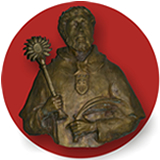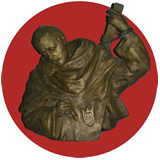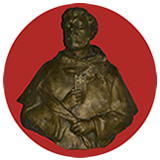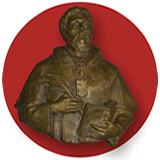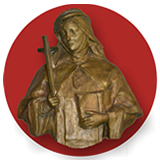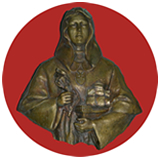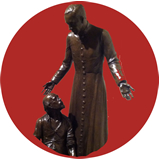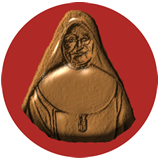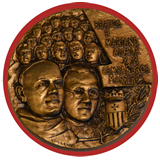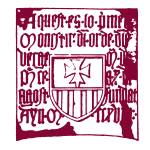Childhood and youth
It was born around the year 1180 in what is now the city of Barcelona. Father Nadal Gaver wrote in 1445 that it was in “mansi sanctuarum Puellarum diocese sancti Pauli municeps civitatis Barchinone ubi suum trastulerat domicilium”. Perhaps in some allodial property dependent on the Monastery of San Pedro de las Santas Puellas (founded in the tenth century by Count Sunyer and today parish in the center of the city) that the Nolasc family owned.
His childhood and early youth spent learning to make fructify the family farm, together with the trade of merchant in the Ciudad Condal, where he had moved his home after the death of his parents. They are years of buoyant economy; Trade flourishes both for the unification of the Catalan counties and the Kingdom of Aragon, as well as for the conquests of Alfonso II in the Ebro and the consolidation of its trans-Pyrenean influence. A different society, citizen and mercantile, appears at the end of the century. The confrontation with the Muslim world brings many captives; the growth of the new rich cities and the abundance of the needy. In the late Middle Ages, a charitable spirituality of help to those most in need emerged, who are being called “poor of Christ”.
Pedro Nolasco Founder
The Mercedarian tradition fixes a special intervention of the Virgin Mary on the night of August 1 to 2, 1218. Marian experience that illuminated the mind of Nolasco and moved his will to convert that brotherhood of redeemers into Religious Order that would continue, under the blessing of the Church and protection of the King of Aragon, the work begun. On August 10, 1218, in the Cathedral of Barcelona, Bishop Berenguer de Palou, in the presence of the King, imposed the white habit on Pedro Nolasco and twelve other companions, and placed him at the head of the new religious family, which will be called Santa Maria de la Merced for the redemption of the captives. Jaume I assigned the nascent friars as residence to the old hospital of Santa Eulalia, where they remained until 1234 Raimundo de Plegamans donated a plot of land in the sandy area of Vilanova and transferred the new convent there. Nolasco from that 1218 to be able to consecrate more to men, consecrated to God totally.
Nolasco will continue to make heroic redemptions every year in Muslim lands, and asking for alms for the redemption of captives. He accompanied Jaume I in the conquests of Mallorca and Valencia, where he received the Royal Monastery of El Puig, and instilled in the young Barcelonian Maria de Cervelló the redeeming spirit, which would make her the first Mercedarian religious. He obtained the pontifical confirmation of his work by the bull “Devotionis vestrae” of Gregory IX, on January 17, 1235, and gave vigorous life to a pious fraternity of lay people who cooperated with their friars in the work of the redemption of captives and in the assistance to the sick, poor and pilgrims in the houses of the Hospital of Santa Eulalia. 17 foundations were made under its generalate: 7 in Catalonia, 3 in Aragon, 4 in the Valencian Community, 1 in Narbonne and another in Palma de Mallorca.
Death and legacy
Pedro Nolasco died shortly after concluding the agreement with Ramón de Morell, on March 7, 1245, for which he received the property of Arguines, since when the notarial document arrives in Barcelona for signature by the General Chapter, on the 12th of June of that year, it is said that Nolasco had already passed away. His death occurred on May 6, 1245, because the first Mercedarian Constitutions, promulgated by Fr. Pedro de Amer in 1272, ordered that “l’aniversai del first mestre del nostre orde sia feyt l’endemá l’ascensio”. The Church recognized its public worship in 1628, and its feast is celebrated on May 6.
He is the man of practical spirit and great organizational capacity, who understands risk in the Gospel sense, and knows how to unite in perfect synthesis the cause of God and man. His faith made him hear the cry of the oppressed and he felt sent by God. His hope was lived as a dynamism of overcoming the impossible and his love will lead him to offer his own freedom and even life for the redemption of the other: it is the fourth Mercedarian vow. Their friars will live in close contact with society, in small communities and with simple liturgies unlike the Conventual Orders. Communities close to those charitable and mendicant associations that gave the church of the thirteenth century a good part of its color and vitality. With them the Mercedarios share a deep respect for poverty, the importance of serving Christians in need, and a religious vocation that demanded a life within the world, with the originality of an exclusivity in the task of redemption.





